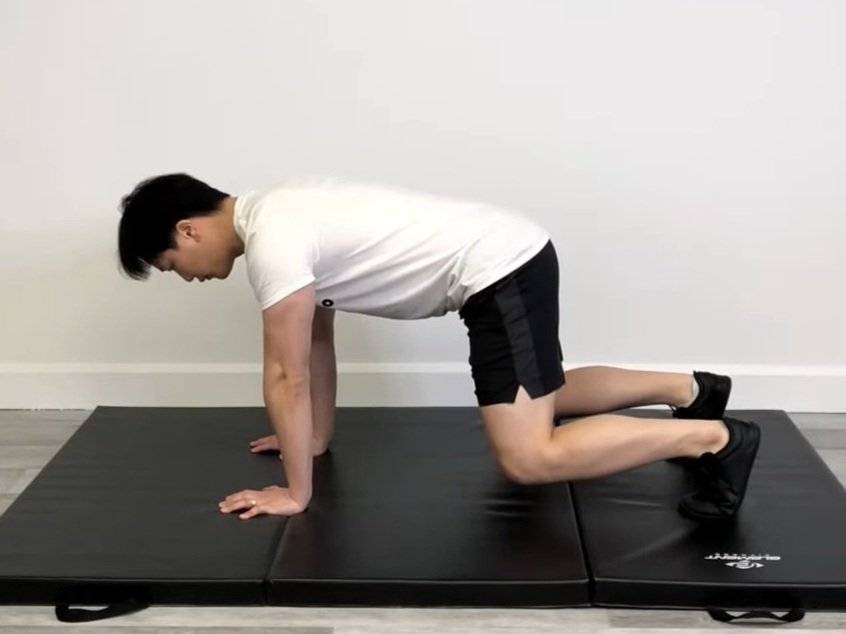Do you struggle with back pain, poor posture, or feeling weak in your core? Do you want to improve your balance, strength, and movement in your daily life? The bear hold is a simple, effective exercise that can help.
At Simply Physio, we teach the bear hold to help people build core strength safely. This exercise helps support your back, improve posture, and make daily tasks like lifting, walking, and sitting feel easier.
What Is the Bear Hold?
The bear hold is an exercise where you hold your body in a crawling position with your knees slightly lifted off the ground. It helps strengthen your core muscles, which include your stomach, lower back, hips, and pelvic floor.
Your core muscles are like the body’s natural belt. They help protect your spine, support your posture, and allow you to move with ease. A strong core can help reduce pain and improve your daily activities.
Benefits of the Bear Hold
The bear hold may look simple, but it offers many benefits, including:
- Stronger Core: It activates deep core muscles to help protect your back.
- Better Posture: Holding your spine in a neutral position improves alignment.
- Improved Balance: It challenges your stability in a safe way.
- Shoulder Stability: Helps build strength in your shoulders and upper body.
- Safe for Many Levels: You can adjust the hold time and position to match your ability.
When practiced regularly, the bear hold can help you move better and feel stronger in your daily life.
How to Do the Bear Hold
The bear hold does not need any equipment. You only need a mat or a soft surface.
Here is how you can do the bear hold safely:
- Start on All Fours: Place your hands under your shoulders and your knees under your hips.
- Tuck Your Toes: This helps you prepare to lift your knees.
- Lift Your Knees: Lift your knees about 1-2 inches off the floor while keeping your back flat and your core tight.
- Hold the Position: Keep your head in line with your spine, look down, and breathe steadily.
- Maintain Control: Avoid letting your hips rise too high or sag down.
- Time Your Hold: Start with holding for 10-15 seconds and work up to 30 seconds as you get stronger.
Repeat this 3-5 times, resting between sets.
Why Core Strength Matters
Your core is more than just your abs. It includes your deep stabilizing muscles that protect your spine and help you move safely.
A weak core can lead to:
- Low back pain
- Poor posture
- Reduced balance
- Difficulty lifting or moving
Strengthening your core with exercises like the bear hold can help:
- Reduce pain
- Improve posture
- Make daily tasks easier
- Build confidence in your movement
Bear Hold vs. Plank: Which Is Better?
Both the bear hold and plank are good core exercises, but they work your body in different ways.
- Bear Hold: Easier on your wrists and shoulders, lower to the ground, and activates deep core and hip muscles.
- Plank: More challenging for shoulders and upper body, higher off the ground, and works the entire body.
If you have wrist or shoulder discomfort, the bear hold may be a safer option to build core strength before progressing to planks.
Mistakes to Avoid During Bear Hold
To get the most from your bear hold, watch out for these common mistakes:
- Hips Too High: This reduces core activation. Keep your hips low and level.
- Sagging Back: Can lead to discomfort. Keep your back flat and core tight.
- Holding Your Breath: Breathe steadily to keep control.
- Neck Out of Alignment: Keep your head in line with your spine.
If you feel discomfort or strain, reset your position and try again.
Modifications and Progressions
The bear hold can be adjusted for your level. Here’s how:
- Easier: Keep your knees on the floor to practice the position before lifting.
- Standard: Lift your knees 1-2 inches and hold steady.
- Harder: Gently tap one foot back or lift one hand to challenge your stability.
How Often Should You Do the Bear Hold?
Start with 2-3 times per week. You can add it to your warm-up, core routine, or home exercise program. As your core strength improves, you can increase the hold time and number of sets.
Real-Life Success Stories at Simply Physio
A client came to Simply Physio with low back pain from sitting at work all day. We added the bear hold to her plan, and within weeks, her posture improved, and her back pain reduced.
Another client wanted to return to running but struggled with hip and core weakness. Using the bear hold helped her build stability, and she returned to running without pain.
When to Seek Help
While the bear hold is safe for many people, you should seek help if:
- You have sharp pain during or after the exercise.
- Your pain increases after trying the exercise.
- You are unsure if the exercise is safe for your condition.
At Simply Physio, we guide you to perform exercises safely and adjust movements based on your needs.
Why Choose Simply Physio for Core Strengthening
At Simply Physio, we help people reduce pain and build strength to move confidently. When you work with us, you will get:
- A personalized assessment to identify your needs
- Guidance on proper exercise technique
- A safe, effective core strengthening plan
- Ongoing support to help you reach your goals
We believe you should feel strong and capable in your daily life.
Take the First Step Toward a Stronger Core
The bear hold is a simple, powerful exercise to build core strength, improve stability, and support your posture. At Simply Physio, we are here to guide you safely, so you can move with confidence and reduce pain.
Take your first step toward a stronger core today. Call Simply Physio to book your visit and learn how core training can help you live better.



